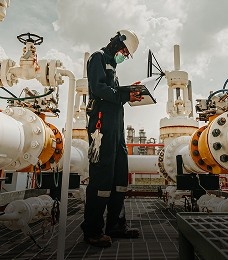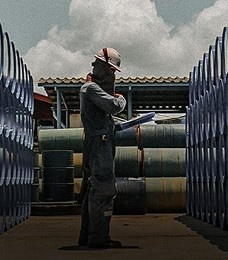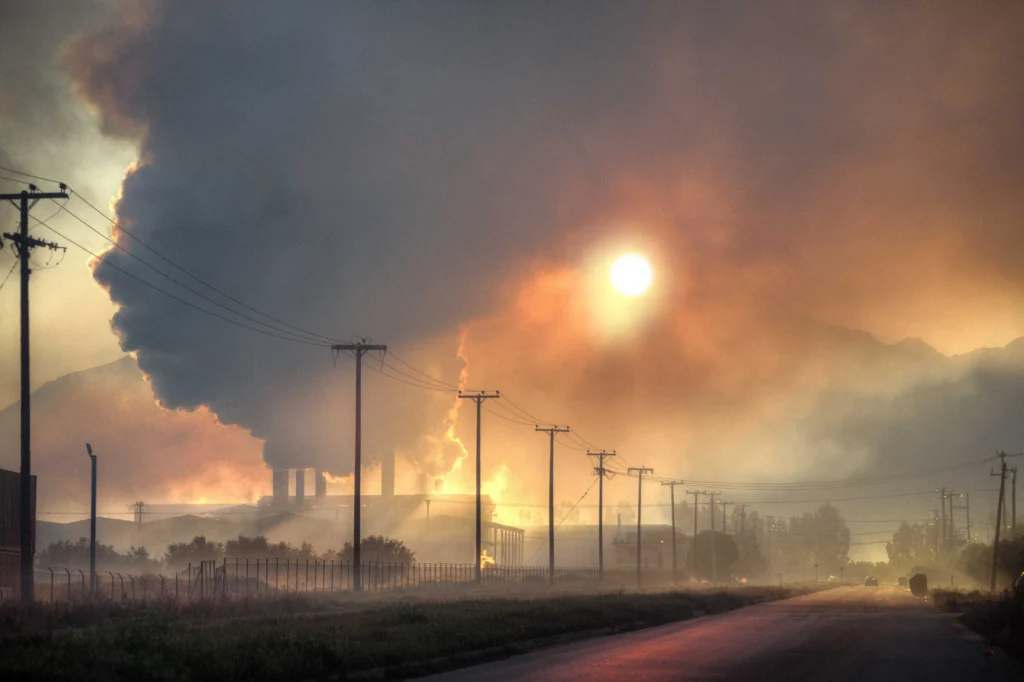By Greg Duncan, MELP, ASP, Sr. EHS & ESG Content Manager, VelocityEHS
Compliance with US EPA air emissions regulations is complex, to put it mildly. Depending on your facility’s industrial operations and processes, locations, dates of construction or modification, and potentially numerous other factors, you may be obliged to comply with dozens of air emissions regulations, each with its own very specific individual requirements. In addition, state and local agencies can provide their own variations and interpretations of federal rules or impose additional standards with which the facility must comply.
Not surprisingly then, an entire industry of regulatory content providers and compliance consultants has emerged to relieve many of the burdens covered facility owners face in meeting these complex regulations. Regulatory content providers and compliance consultants are an invaluable resource for businesses to ensure compliance, but at its heart, compliance with EPA air emissions regulations rests squarely on accurate and reliable emissions data, and the ability to efficiently capture, analyze, and report that data. Since the early days of the EPA in the 1970s, EHS and environmental compliance managers have turned to spreadsheets and basic database software to manage their air emissions data. These systems were never an ideal solution to meet the unique challenges of air emissions monitoring, analysis, and reporting, but were unfortunately the only technologies that could support these complex calculations and reporting functions required under the regulations. Luckily, that is no longer the case.
Today’s purpose-built air emissions software solutions are specifically designed to perform and optimize the complex monitoring, analysis, and reporting functions required under EPA air emissions reporting regulations. Continuing innovation in these software solutions is making air emissions compliance simpler, less time-consuming, and far more cost-effective, especially in the complicated and evolving regulatory landscape facing industries in the US.
Key Air Emissions Regulations & Requirements of the Clean Air Act (CAA)
The most commonly applicable air emissions regulations affecting US businesses are those established under the US Clean Air Act (CAA). Among all US environmental legislation, the CAA and its subsequent regulations are arguably the most complex. The CAA establishes EPA’s authority to develop and enforce National Ambient Air Quality Standards (NAAQS) to protect public health and public welfare, and to regulate emissions of hazardous air pollutants from a variety of industrial sources. It achieves these objectives by directing the states to develop and enforce state implementation plans (SIPs) that regulate emissions from these industrial sources within each state to a degree that meets the federally established NAAQS.
Federal EPA and state environmental agencies achieve this fundamental mission by issuing technology-based standards for different types of industrial air emissions sources. Although these standards may very well apply to your business, the full scope of CAA regulations affecting stationary industrial sources (e.g., GHG reporting, mobile source regulations, clean air markets and emissions trading programs, Ozone layer protection, radiation, asbestos, etc.) is far too broad to cover here.
For the purposes of this discussion, the focus is on key requirements for stationary sources under the New Source Performance Standards (NSPS) at 40 CFR Part 60 and its subparts, the New Source Review (NSR) and Prevention of Significant Deterioration (PSD) regulations, and the National Emission Standards for Hazardous Air Pollutants (NESHAP) Air Toxics regulations. Here is a very brief summary of each of these parts of the federal regulations. If you have a covered facility under these regulations, please click the links throughout this section and review the regulations in their entirety to assess your full compliance obligations.
What Type of Emissions Source is Your Facility?
A major distinction that will significantly influence your facility’s compliance requirements under the various CAA regulations is the difference between major sources, minor sources (sometimes referred to as non-major sources or area sources), and synthetic minor sources.
A facility’s potential to emit (PTE) is key to distinguishing between these three emissions source categories. EPA states that PTE, “means the maximum capacity of a stationary source to emit a pollutant under its physical and operational design.” PTE describes the maximum capacity of a stationary source to emit a given air pollutant under its physical and operational design and is used to determine whether a source qualifies as a major source, minor source, or synthetic minor source.
Major Sources
EPA defines “major sources” as stationary sources or groups of stationary sources that emit or have the potential to emit 10 tons per year or more of a hazardous air pollutant, or 25 tons per year or more of a combination of hazardous air pollutants, including:
- Particulate matter (PM)
- Carbon monoxide (CO)
- Volatile organic compounds (VOCs)
- Sulfur dioxide (SOx)
- Nitrogen oxides (NOx)
Major source thresholds for “hazardous air pollutants” (HAP) are 10 tons/year for a single HAP or 25 tons/year for any combination of HAP. Lower thresholds apply in NAAQS non-attainment areas (but only for the pollutant that are in non-attainment). Facilities classified as Major Sources are subject to stringent CAA Title V monitoring and reporting requirements.
Minor Sources
A minor source is any stationary source that is not a major source. “Minor source” means a source that emits, or has the potential to emit, regulated New Source Review (NSR) pollutants in amounts that are less than the major source thresholds under the Prevention of Significant Deterioration (PSD) program, with a few exceptions. The EPA generally does not require minor sources to obtain operating permits, although some states and local agencies do require registration of minor sources.
Synthetic Minor Source
A synthetic minor source means a source that otherwise has the potential to emit regulated air pollutants in amounts that are at or above those for major sources, but that have taken on some voluntary operational restriction so that the facility’s PTE is less than the major source threshold. Such restrictions are established within a state-run Federally Enforceable State Operating Permit (FESOP). The primary purpose of a FESOP is to establish the facility as a “synthetic minor” source. Potential permit restrictions/conditions include emissions limits, emissions caps, and operational limitations on production, raw material usage or hours of operation in order to ensure emissions remain below major source thresholds.
EPA states that, “Any physical or operational limitation on the capacity of the stationary source to emit a pollutant, including air pollution control equipment and restrictions on hours of operation or on the type or amount of material combusted, stored, or processed, shall be treated as part of its design if the limitation or the effect it would have on emissions is federally enforceable.” Under this definition, sources that would otherwise qualify as major sources that can obtain enforceable FESOP permit limitations from the EPA or delegated SIP state authority containing physical or operational limits to bring their emission below the major source threshold are referred to as synthetic minor sources.
New Source Performance Standards (NSPS)
The CAA requires EPA to identify important categories of stationary sources of air pollution, and to establish Federal standards of performance for new sources within these categories. These New Source Performance Standards (NSPS) apply to newly constructed sources or those that undergo major upgrades or modifications. NSPS regulations are found in 40 CFR 60 and establish permitting requirements for affected facilities and define equipment specifications as well as operation and measurement requirements.
NSPS regulations include 106 individual subpart requirements for permitting and operations for a long list of facility types and industrial operations. For a full list of NSPS subpart regulations that may apply to your facility, click here.
New Source Review (NSR) & Prevention of Significant Deterioration (PSD)
New Source Review (NSR) regulations establish permitting requirements for new and modified emissions sources (i.e., industrial facilities). NSR permits are legally binding documents that facility owners and operators must follow, and specify what construction is allowed, air emission limits, and facility operating conditions including installation of regulatory-prescribed “Best Available Control Technology (BACT)” to minimize emissions to the greatest feasible extent. Most NSR permits are issued by state or local air pollution control agencies. EPA issues permits in some cases.
EPA establishes the basic requirements for an NSR program, although states may develop unique NSR requirements and procedures tailored for their NAAQS attainment needs so long as the program is at least as stringent as EPA’s requirements. EPA must approve these programs in the state’s SIP. States may be delegated authorities to issue permits on behalf of EPA and are often referred to as “delegated states.”
Prevention of Significant Deterioration (PSD) applies to new major sources or major modifications at existing sources for pollutants where the area the source is located is in attainment or unclassifiable with regard to the National Ambient Air Quality Standards (NAAQS). It requires the following:
- installation of the “Best Available Control Technology” (BACT)
- an air quality analysis
- an additional impacts analysis
- public involvement
National Emission Standards for Hazardous Air Pollutants (NESHAP) Air Toxics regulations
Hazardous Air Pollutants (HAPs) and other toxics air emissions are a primary concern when it comes to protecting human health and the environment. HAPs include pollutants that are known or suspected to cause cancer or other serious health effects including reproductive effects or birth defects, or adverse environmental impacts. NEHSAPs were some of the first emissions standards established under the CAA upon their passage into law in 1970, shortly after the founding of the EPA.
EPA has defined a list of 188 specific HAPs. HAPs are commonly produced by a wide range of sources including industrial sources such as chemical factories, refineries, and incinerators, and even from small industrial and commercial sources, such as dry cleaners and printing shops. Under the 1990 Amendments to the CAA), EPA has regulated both major and non-major sources of air toxics but has mainly focused monitoring and enforcement efforts on major sources.
NESHAPs regulations are published under 40 CFR Parts 61 and 63. Similar to NSPS, NESHAP regulations contain an equally complex 23 subparts in 40 CFR 61 and 139 subparts in 40 CFR 63, each establishing a specific set of emissions performance, monitoring, and reporting requirements for a wide variety of industrial processes and facilities who manufacture certain types of chemical products.
While the NESHAP regulations apply to all stationary sources that emit HAPs above established thresholds, although they do not specifically require minor source emitters to obtain any type of operating permit, consistent with NSPS and NSR/PSD requirements. NESHAP sources that meet the Clean Air Act definition of “major source” must obtain a CAA Title V operating permit and generally receive a full compliance evaluation by the state or regional office at least once every two years. Minor sources and synthetic minor sources have less frequent, lest intensive compliance evaluations, although other factors such as state/federal information collection and enforcement priorities, facility compliance history, location, operational patterns, and others as Determined by the EPA’s Clean Air Act Stationary Source Compliance Monitoring Strategy (CAA CMS).
Stationary sources subject to NESHAPs are required to perform an initial performance test to demonstrate they are not emitting HAPs above a maximum amount or concentration for that HAP. To demonstrate ongoing compliance, NESHAP covered sources are generally required to monitor control device operating parameters established during the initial performance test and may also be required to install and operate continuous emission monitoring equipment to measure emissions and demonstrate compliance.
NESHAP regulations require owners and operators of affected sources to submit specified reports (including performance test results, control equipment performance data, and HAP emissions monitoring data, etc.,) electronically to the Compliance and Emissions Data Reporting Interface (CEDRI), available within EPA’s Central Data Exchange (CDX). Major source/Title V permit facilities must submit emissions data annually.
The Common Air Emissions Compliance Thread
At their core, all CAA regulations have one thing in common: they require owners and operators of facilities who emit air pollutants above certain threshold amounts to, at a minimum, accurately monitor, analyze, and report air emissions data to applicable state and/or federal regulators.
Air emissions data are derived in several different ways:
- Continuous direct measurements using one of the following methods:
- Continuous Emission Monitoring Systems (CEMS) that continuously measure actual emissions levels from a stationary source. The CEMS directly measures the pollutant of concern or measures a surrogate pollutant for the pollutant of concern.
- Continuous Opacity Monitoring Systems (COMS) that continuously measure opacity, which is a measure of the amount of light attenuated by particulate matter in effluent emissions.
- Continuous Parameter Monitoring System (CPMS) measures a parameter (or multiple parameters) that are a key indicator of control system performance. The parameter is generally an operational parameter of the process or the air pollution control device (APCD) that is known to affect the emissions levels from the process or the control efficiency of the APCD. Examples of parametric monitoring include temperature, pressure, or flow rate monitoring.
- Estimates using direct, infrequent stack testing.
- Estimates based on average emission rate information (e.g., mass flow and AP-42 Compilation of Air Emissions Factors ).
EPA regulation and enforcement of both EPCRA and CAA regulations is heavily dependent on voluntary compliance and reporting from regulated facilities. This is evidenced by the fact that, in FY 2022, EPA performed just over 5,800 inspections across more than 800,000 covered facilities in the US. This equals approximately 0.725% of all regulated facilities, and that’s for all facilities covered under ALL EPA regulations including CAA, Resource Recovery and Conservation Act (RCRA), Clean Water Act (CWA), and all other EPA enforceable regulations.
You might think based on these enforcement figures that EPA is spread far too thin, but the electronic reporting requirements and systems that support EPCRA and CAA regulations give EPA a powerful tool for uncovering non-compliance. Among those approximately 5,800 inspections performed in FY 2022, EPA initiated 112 new criminal cases. That’s not to mention the administrative and civil penalty cases, most likely prompted by poor reporting compliance from covered facilities, that were opened and prosecuted last year.
Also keep in mind that EPA doesn’t like to lose these cases. Among the criminal cases adjudicated in FY 2022, an individual defendant was prosecuted in 88% of the criminal cases charged, and the criminal enforcement program’s conviction rate was 94% in FY 2022.
Here are a few other EPA compliance statistics that show this Agency isn’t messing around:
- Court sentencing in cases adjudicated in FY 2022 resulted in a total of 21 years of incarceration for individual defendants.
- Individual and corporate defendants paid $149,312,313 in fines and restitution with $7,862,500 in court-ordered environmental projects
- Defendants were required to forfeit an additional $214,110,581 of illegal proceeds in FY 2022
To make up for a continued lack of on-site inspection personnel in recent years, EPA has developed ingenious statistical models and analysis methods to uncover non-compliance and aggressively target its enforcement actions based on reporting data alone. In addition to strategic targeting of compliance and enforcement resources, monitoring data and other compliance information is made available to the public through the EPA’s Enforcement and Compliance History Online (ECHO). Anyone visiting the ECHO portal can view your facility’s emissions, compliance history and enforcement actions, and other detailed facility information that could be potentially damaging to your business’ reputation and corporate image.
As regulated businesses, it’s time to level the playing field and ensure you’ve got high quality air emissions reporting data at-the-ready to not only meet your monitoring, analysis, and reporting requirements, but to give your business an edge when it comes to reducing your environmental impact, pursuing environmental management excellence through standards like ISO 14001, and demonstrating your commitment to ESG performance for your stakeholders.
VelocityEHS Can Help You!
The VelocityEHS Accelerate® Platform helps you simplify compliance, build a framework for effective EHS management programs and put you on a solid foundation for ESG performance. When it comes to Environmental Compliance in particular, we really mean it. Our Environmental Compliance Solution, part of the VelocityEHS Accelerate® Platform, simplifies emissions monitoring, calculation, and reporting with innovative capabilities that scale to handle every air emissions compliance application, from simple emissions inventory tracking on up to full CAA Title V Permit compliance.
The Air Emissions capabilities of our Environmental Compliance Solution give your business cutting-edge performance when it comes to meeting complex CAA regulations. You can automatically track HAPs and other regulated air emissions from point source emissions sensors and control equipment in real-time with integrated CEMS/CPMS/COMS data logging via our OSIsoft© PI Interface. You can also streamline manual data collection with interactive, mobile enabled PDF emissions data collection forms that instantly sync to your emissions database from across your facility, or even your entire enterprise. You can graphically map facility emission units, control equipment and sources, access a full equation library & custom formula builder, and receive automated alerts for permit exceedances, approaching limits, and other critical permit compliance tasks. From there, your data can be easily exported into pre-built reporting formats that are designed for direct submission to CDX, TDX, TCEQ STEERS, and other state and federal reporting interfaces.
If you’re still relying on spreadsheets or simple database systems to manage your air emissions data collection, analysis, and reporting tasks, it’s time to step into the 21st century. Ditch the old systems and look at the Air Emissions capabilities of our Environmental Compliance Solution, part of the VelocityEHS Accelerate® Platform.
Request a demo and see for yourself how easy air emissions compliance can be.














